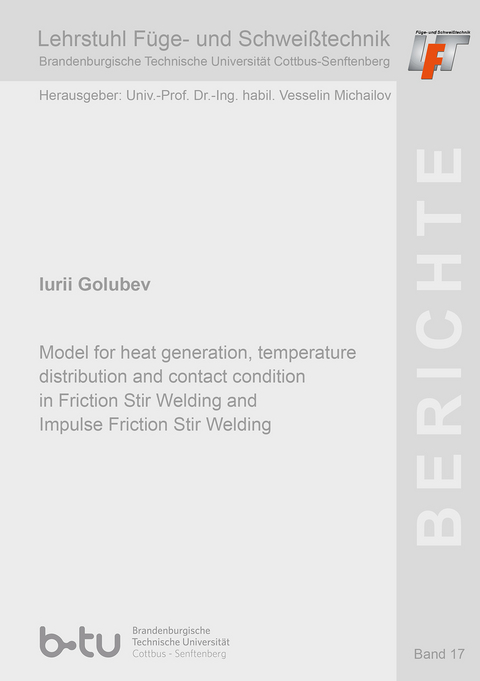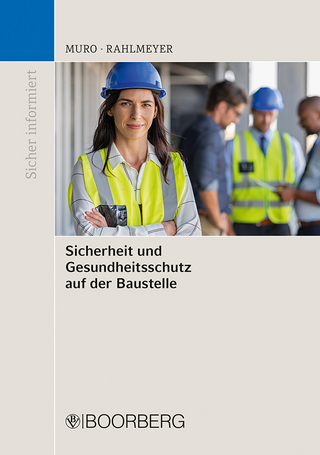Model for heat generation, temperature distribution and contact condition in Friction Stir Welding and Impulse Friction Stir Welding
Seiten
- Keine Verlagsinformationen verfügbar
- Artikel merken
Solid-state friction stir welding (FSW) has many advantages over conventional welding methods, including a smaller heat-affected zone, low distortion, low residual stresses, high mechanical and good fatigue properties, which make this new joining technique interesting for many industrial fields. Further improvement of the properties is possible by using impulse friction stir welding (IFSW), which was originally developed by BTU Cottbus in Germany in 2001.The heat generation in FSW and IFSW is "self-controlling" and highly dependent on the non-uniform thermomechanical conditions at the contact interface. To take the influence of this self-controlling mechanism on temperature distribution into account, the coupling of the global numerical model for temperature distribution with the local numerical model for heat generation is widely applied. These models cannot be used for the simulation of all the welding stages in large, welded components due to high computational and human resource requirements. Another problem with the existing models is that the contact condition has been predefined.In the present work, a global numerical model for temperature distribution is combined with a local numerical analytical model for heat generation to simulate the temperature distribution in FSW and IFSW. The model considers the self-controlling effect of the heat generation and allows the temperature distribution in the welded parts during the entire welding process in one simulation run. The new approach enables the temperature in IFSW to be calculated due to the force-time-dependent contact interface. The contact condition is a part of the numerical solution itself and controlled by the temperature-dependent coefficient of friction and the effective area of the contact interface.
| Erscheinungsdatum | 08.07.2022 |
|---|---|
| Reihe/Serie | Berichte des Lehrstuhls Füge- und Schweißtechnik der BTU Cottbus ; 17 |
| Verlagsort | Düren |
| Sprache | englisch |
| Maße | 148 x 210 mm |
| Gewicht | 213 g |
| Themenwelt | Sachbuch/Ratgeber ► Natur / Technik ► Technik |
| Technik ► Maschinenbau | |
| Schlagworte | finite element analysis • Friction Stir Welding • Heat source model • Thermal simulation |
| ISBN-13 | 9783844086645 / 9783844086645 |
| Zustand | Neuware |
| Informationen gemäß Produktsicherheitsverordnung (GPSR) | |
| Haben Sie eine Frage zum Produkt? |
Mehr entdecken
aus dem Bereich
aus dem Bereich
die wichtigsten Begriffe, Bautypen und Bauelemente
Buch | Softcover (2024)
Prestel (Verlag)
CHF 44,75




